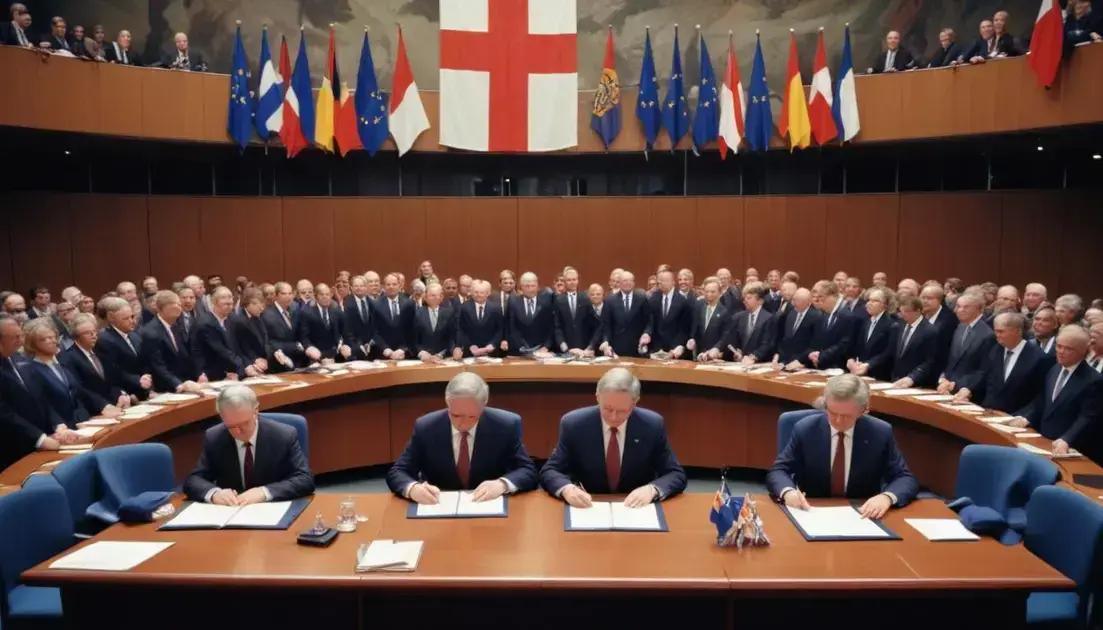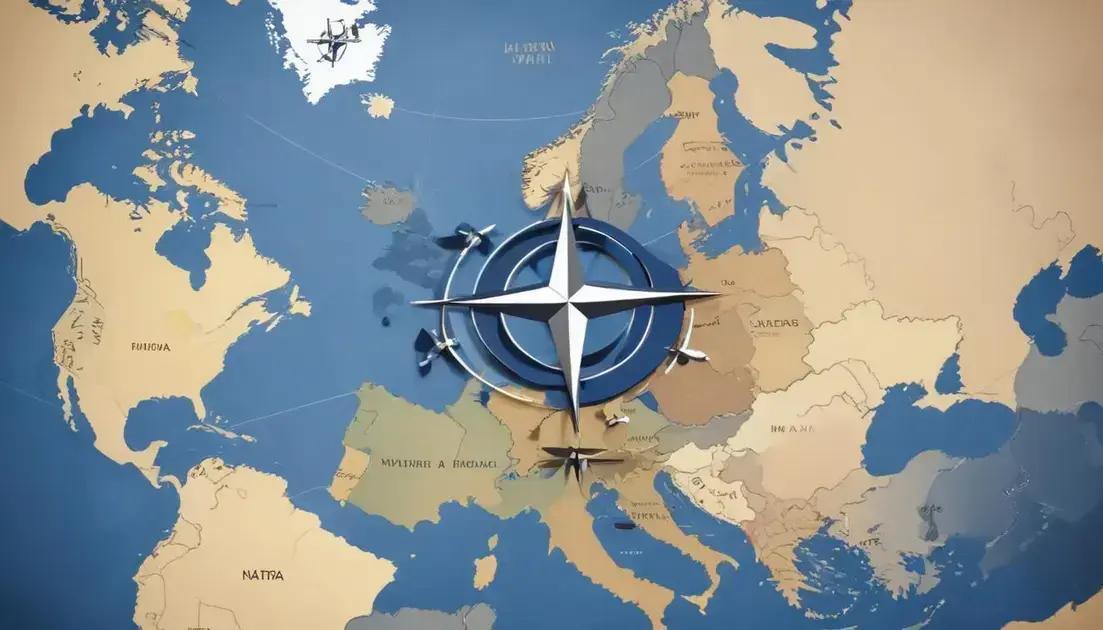
Maastricht Treaty: Milestone of the Modern European Union
The Maastricht Treaty, signed in 1992, is a pivotal agreement that laid the foundation for the European Union. It introduced the euro, fostering economic stability and promoting closer political cooperation among member states. This treaty highlighted the importance of working together to address common challenges, such as security and human rights, and set the stage for a unified Europe. The impacts of the Maastricht Treaty continue to shape the EU’s policies and dynamics, influencing future agreements and ensuring collaboration among diverse nations.
The Maastricht Treaty is a cornerstone of European integration, setting the stage for the political and economic landscape we know today. Curious about its legacy? Let’s dive in!
Introduction to the Maastricht Treaty
The Maastricht Treaty was signed in 1992, and it changed Europe forever. It marked a big step toward a united Europe by creating the European Union (EU). This treaty combined various nations under one umbrella, allowing them to work together more closely.
Before the treaty, Europe was mainly a collection of countries. Each one had its own rules and systems. The Maastricht Treaty aimed to overcome these differences. It established common policies in areas like trade, defense, and security.
Main Goals of the Treaty
One goal was to introduce a single currency, the euro. This would make trade easier between these countries and increase economic stability. The treaty also focused on creating a single market. This meant goods and services could flow freely between nations.
Political Integration
The treaty did not only deal with money. It also promoted political integration. The member states agreed to work together on policies that would affect their people. This was a new way of thinking in which countries would share more power and responsibilities.
The impact of the Maastricht Treaty is still felt today. It laid the groundwork for new laws and treaties that followed. By creating a more unified Europe, it opened doors for countries to collaborate on many levels.
Key Provisions of the Treaty
The Maastricht Treaty has several key provisions that shaped the European Union. One major provision is the creation of the euro. This single currency helps to make trading easier between member countries.
Another important provision involves the establishment of a common foreign and security policy. This means EU countries would collaborate on issues related to defense and international relations. It aimed to increase Europe’s influence globally.
The treaty also introduced the principle of subsidiarity. This means decisions should be made as close to the citizens as possible. If a local government can make a decision better than a national government, they should.
Economic and Social Policies
Furthermore, the treaty set out plans for economic and monetary union. It included rules to ensure stability and growth among member nations. This would mean working together to support each country’s economy.
Lastly, the Maastricht Treaty highlighted the importance of human rights. It emphasized that EU nations must respect democratic values and promote social justice. This commitment helps protect citizens across Europe.
Impact on the European Union
The Maastricht Treaty has had a significant impact on the European Union. It marked a major step in the journey toward European integration. Member states began to cooperate more closely in various areas.
One clear effect has been economic stability. The introduction of the euro created a more unified market. This has made trade smoother for businesses across Europe. Now, countries can trade with fewer barriers.
Another impact is the strengthened political ties among the EU nations. They engage in open discussions on various issues, such as foreign policy and security. This cooperation has helped Europe stand strong in global matters.
Encouraging Unity
The treaty also encouraged countries to work together on social policies. This includes ensuring that citizens can enjoy basic rights and freedoms. Such shared values promote unity across different cultures.
However, the impact has not all been smooth. Challenges like differing economic levels exist among member states. Some countries have benefitted more than others from the EU framework.
Future Implications
Looking ahead, the Maastricht Treaty continues to shape discussions about EU policies. It lays the foundation for future treaties aimed at deeper integration. Understanding its impact helps us grasp the ongoing changes in Europe.
Future Implications
The Maastricht Treaty set the stage for future developments in the European Union. Its principles continue to influence new agreements and policies. Countries are still discussing how to deepen their integration.
One big future implication is increased political cooperation. Member states may need to align their foreign and security policies. This could lead to a stronger collective voice on the global stage.
The treaty also encourages ongoing economic collaboration. As economies evolve, nations will need to find ways to support each other. This could mean more shared resources and joint projects.
Potential Challenges
However, challenges may arise from these changes. Economic inequalities can cause tensions. Wealthier nations may need to support those facing economic struggles.
Cultural differences may also play a role in the future of the EU. Balancing diverse interests and values will be an ongoing challenge. Finding common ground is crucial for maintaining unity.
Looking Ahead
Ultimately, the Maastricht Treaty will guide the EU’s path forward. Its legacy encourages discussions about reform and growth. The future of Europe depends on how well countries work together.
Conclusion
The Maastricht Treaty is a key part of European history. It reshaped how countries in Europe work together. By laying the groundwork for the European Union, it changed politics and economics in Europe.
It created a more unified Europe by introducing the euro as a common currency. This eased trade and made it simpler for countries to interact. The treaty also strengthened ties among member states, focusing on shared goals.
Looking ahead, the impacts of this treaty will continue to unfold. Countries will need to address new challenges while striving for unity and cooperation. Understanding its importance is vital for anyone interested in European affairs.
Conclusion
In conclusion, the Maastricht Treaty plays a vital role in shaping modern Europe. It has unified countries and created stronger ties among them. By introducing the euro, it made trade easier and opened doors for collaboration.
The treaty also emphasizes the importance of working together on issues like security and human rights. As the EU continues to grow, the principles from this treaty will guide future agreements and policies.
Understanding the Maastricht Treaty helps us see how far Europe has come and where it may go next. By building on this foundation, countries can face challenges together, ensuring a brighter future for all citizens in the EU.


